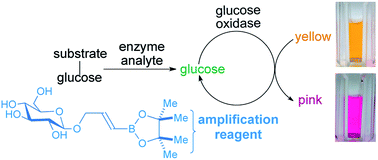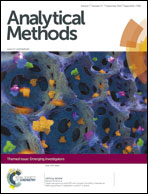A strategy for minimizing background signal in autoinductive signal amplification reactions for point-of-need assays†
Abstract
Rapid point-of-need assays are used to detect abundant biomarkers. The development of in situ signal amplification reactions could extend these assays to screening and triaging of patients for trace levels of biomarkers, even in resource-limited settings. We, and others, have developed small molecule-based in situ signal amplification reactions that eventually may be useful in this context. Herein we describe a design strategy for minimizing background signal that may occur in the absence of the target analyte, thus moving this in situ signal amplification approach one step closer to practical applications. Specifically, we describe allylic ethers as privileged connectors for linking detection and propagating functionality in a small molecule signal amplification reagent. Allylic ethers minimize background reactions while still enabling controlled release of a propagating signal in order to continue the signal amplification reaction. This paper characterizes the ability of allylic ethers to provide an amplified response, and offers insight into additional design considerations that are needed before in situ small molecule-based signal amplification becomes a viable strategy for point-of-need diagnostics.

- This article is part of the themed collections: Microfluidics Research 2015-2016 and Emerging Investigators

 Please wait while we load your content...
Please wait while we load your content...